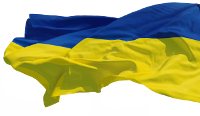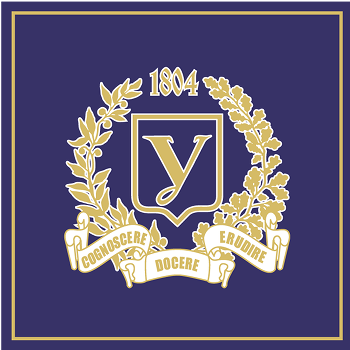Яцентюк Ю. В.
- 2021-35
The Landscape Complexes of the Regional Landscape Park «Murafa»
Purpose. To identify the peculiarities of the landscape complexes of the regional landscape park (RLP) «Murafa».
Methods: theoretical generalization, systematization of facts, finding of empirical relationships, analyti-cal and cartographic analysis, cartographic, logic, field.
Results. Forest-steppe upland landscapes are widespread on the territory of RLP Murafa. Within them sloping, floodplain, floodplain-terrace, watercourse and plakor terrains are well-defined. The tracts of slopes of different steepness with oak-hornbeam forests on chernozems podzolic and dark grey podzolic soils, with mead-ow steppes on deep low humus chernozems, tracts of limestone and granite outcrops have been preserved in the sloping areas. Meadows of different levels and humidity, black alders, willows, sedge thickets are typical tracts of floodplains. The tracts of flat surfaces with oak-hornbeam forests on dark grey podzolic soils and chernozems podzolic were common in the past in the structure of floodplain-terraces areas. Aquatic areas of shallow and deep places are distinguished in watercourse areas. Aquatic tracts of islands, rapids, shivers, the central watercourse, shallow watercourses and branches, bays were formed on the shallow areas. The tracts of central deep water, central shallow water and coastal shoals were formed on the deep places. The tracts of convex areas of actual watersheds with meadow steppes groupings on typical shallow low-humus chernozems are allocated on plakors. The tracts of slightly sloping surfaces of watersheds and ravines with dark grey podzolic soils under oak and hornbeam forests also were common here in the past.
Conclusion. While creating RLP "Murafa", mainly integral natural complexes of river valleys were in-cluded. It was found that the landscape structure at the local level is dominated by sloping areas. The least com-mon are plakor areas. It was discovered that rural residential, meadow-pasture agricultural, mining, forest and water anthropogenic landscapes were formed on the place of natural tracts of the park due to the process of anthropogenization.
- 2020-33
The Recovery Territories of the Ecological Network in Zhmerinsky District of Vinnytsia Region
Purpose. To identify the peculiarities of the recovery territories of the ecological network of Zhmerinsky district of Vinnytsia region.
Methods: field, cartographic system analysis.
Results. The total area of the recovery territories of the ecological network of Zhmerinsky district is 5449,61 hectares, that is 4.8 % of the area of the district. They include Dubovska, Zorincivska, Lisogirkivska, Petranivska, Sloboda-Mezhirivska, Karmalyukovska, Vasilivkivska, Pultivcivska, Lyudavska, Demidivska, Potokivska, Rizhavska, Zhmerinska, Petrivkivska, Kichmanska, Yaroshenkivska, Tarasivkivska, Travnevska, Noskivecka, Luka-Movchanska, Murashkivska, Chapayivska, Oleksandrivska territories. They cover channel, floodplain, slope and watershed types of landscape terrains. Balka tracts on the slopes of river valleys with forest and meadow vegetation are dominant. It was revealed that the main anthropogenic factors of nature degradation of the recovery territories are cattle grazing, haymaking, gathering of mushrooms, berries, flowers, illegal felling of trees, pollution by household waste, discharge of household sewage into rivers and streams. The main environmental measures should be the cessation of erosion processes, restoration of diversity and protection of flora and fauna, elimination of natural landfills of household waste.
Conclusion. 23 recovery territories are identified in the structure of the ecological network of Zhmerinsky district of Vinnytsia region. To compensate for the small number of biocenters in the future, most recovery territories have been allocated in the north-western, southern and south-eastern parts of the district. Their characteristic features are analized and renaturalization measures are proposed. Due to these measures it will be possible to restore degraded areas of nature, increase the number and the area of key, connecting and buffer areas. As a result, the state of the environment, living conditions of flora, fauna and vital activities of the population will improve.
- 2018-1-2-:29
The Recovery Territories of the Рaradynamyc Anthropogenic Landscape System of the Ecological Network of Murovanokurylovetsky District of Vinnytsia Region
Purpose. To identify the peculiarities of the recovery territories of the paradynamyc anthropogenic land-scape system (PDALS) of the ecological network of Murovanokurylovetsky district of Vinnytsia region. Meth-ods: field, theoretical generalization, analytical and cartographic analysis, logic, finding of empirical relation-ships, cartographic. Results. It was discovered that the areas of relative-natural landscapes occupy only a few percent of the area of Murovanokurylovetsky district of Vinnytsia region. Therefore, under such conditions, it was offered to form an ecological network as a paradynamyc anthropogenic landscape system. This allows to include valuable territories of different levels of anthropogenization in the ecological network.
In the article, the ecological network is considered as a holistic paradynamyc anthropogenic landscape sys-tem of key, connecting and buffer territories, zones of potential renaturalization, eco-technical junctions and interactive elements. They are related to each other by the common genesis, simultaneity or sequence of origin and development, dynamic connections.
The important structural elements of the paradynamyc anthropogenic landscape system of ecological net-works are recovery territories (zones of potential renaturalization). Publications devoted to their description are currently single. Nevertheless, measures of renaturalization within the recovery territories allow to restore and introduce valuable nature sites into the structure of environmental protection systems. Therefore, the study of recovery territories is very relevant.
The structure of the nature-protective paradynamyc anthropogenic landscape system of the ecological network of Murovanokurylovetsky district of Vinnytsia region identified the following recovery territories: Konyschivska, Zhytnykivska, Verbovetska, Vynohradnivska, Naddnistrianska, Zhvanska, Halaykivetska, Volodymyrivska, Murovanokurylovetska, Posuhivska, Dereshovska, Myhaylivetska, Yaltushkivska, Bilyanska, Karayetska, Nyshivetska, Kotyuzhanska, Blakitnivs'ka, Gorayska and Glibokodolinska.
The characteristic features of the recovery territories of the nature-protective paradynamyc anthropogenic landscape system of the ecological network of Murovanokurylovetsky district of Vinnytsia region are analyzed in the article. It was discovered that natural components and landscape complexes within the zones of potential renaturalization have undergone a significant transformation under the influence of human anthropogenic activity. They are often polluted and devoid of original state. However, areas with remnants of landscape complexes that are close to natural ones are preserved in these territories. Under the conditions of total
________________________
© Яцентюк Ю. В., 2018
anthropogenic transformation of nature, recovery territories are one of the few centers of the existence of valua-ble species of vegetation and wildlife. The species of plants and animals of the Red Books of Vinnytsia region and Ukraine are found here.
The article suggests renaturalization measures for each recovery territory of the nature-protective parady-namyc anthropogenic landscape system of the ecological network of Murovanokurylovetsky district of Vinnytsia region. The main environmental measures within the zones of potential renaturalization are overcoming erosion processes, restoration, care and protection of forest, meadow, steppe, wetland and meadow-steppe vegetation.
The paradynamyc connections between zones of potential renaturalization and surrounding anthropogenic landscapes, local biocentres, regional and local ecocorridors, and other recovery territories are considered in detail.
Conclusion. Consequently, 20 recovery territories are identified within the paradynamyc anthropogenic landscape system of the ecological network of Murovanokurylovetsky district of Vinnytsia region. Their total area is 6222.16 hectares, which is 7.02 % of the area of the district. They cover the sources of the tributaries of the main rivers in the area, the steep slopes of the river valleys with erosion forms of relief, forest, meadow, meadow-steppe and wetland landscape complexes. Nature-protective measures within them will allow the de-graded areas of nature to be restored. By intermediation of paradynamyc connections, they will improve the state of the environment. Under the conditions of renaturalization on the basis of the recovery territories, it will be possible to form new and expand existing biocentres, buffer zones, create interactive elements, and optimize local ecological corridors. This will improve the habitat of living organisms and ensure their recovery and conservation.
- 2012-1-2-:17
The Regional Econetwork of Vinnitsya Region
The features of Vinnytsya region еcоnеtwork are described. The national core areas, regional centres of biotic diversity, national and regional еcоlogical corridors of Vinnytsya oblast are considered. The structure of the ecological network Vinnytsia region identified 41 key territory. Among them are three national parks kernel and 38 regional centers of biodiversity. They differ most biological and landscape diversity and generally repre-sented nature reserves.
- 2014-3-4-:22
Industrial anthropogenic paradynamic and paragenetic landscape systems of Vinnytsya
The structure of industrial anthropogenic paragenetic and paradynamic landscape systems of Vinnitsa are considered. In subzone direct air and indirect impact of industrial mineral landscapes stands on 3 types of an-thropogenic and paragenetic pardinamicheskih landscape zones: permissible, moderate and dangerous levels of pollution. Ranges of individual paragenetic and paradynamic fields of all the zones of influence of interconnected water and air currents. Within Vinnitsa allocated 11 paragenetic and anthropogenic landscape paradynamic fields with an acceptable level of environmental pollution, 18 fields with a moderate level of contamination and 5 fields with dangerous levels of pollution. At the outbreak of dangerous levels of pollution fields increases the overall incidence of children and adults on chronic respiratory diseases and impaired functional state of the cardiovascular system.

